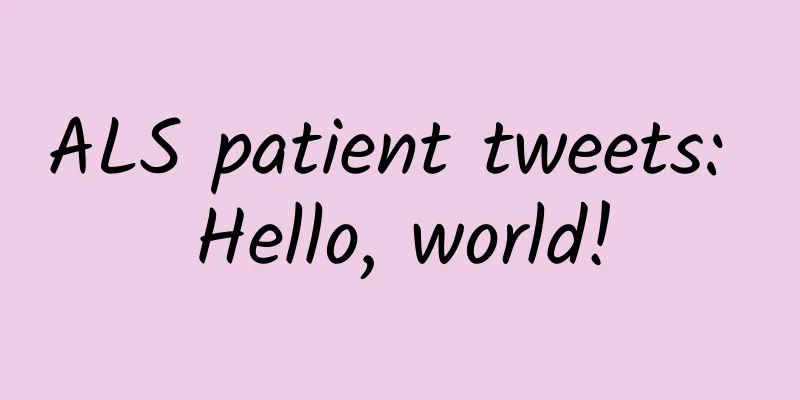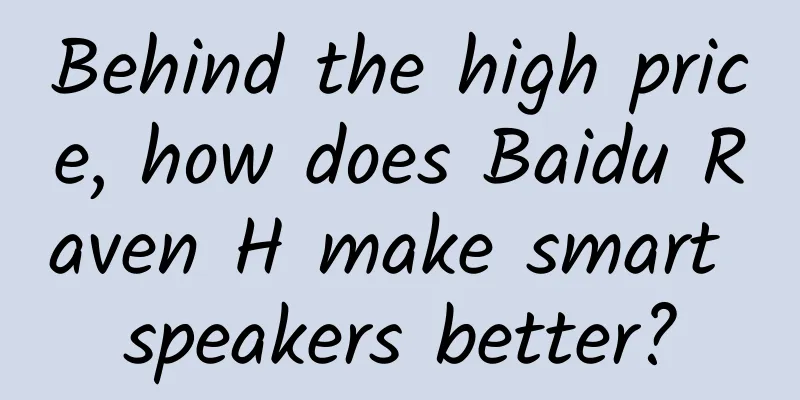ALS patient tweets: Hello, world!

|
Recently, domestic and foreign media suddenly broke a news that Philip O'Keeffe, a 62-year-old Australian patient with ALS (amyotrophic lateral sclerosis), could not move his whole body and had lost the ability to speak, but he sent a tweet on December 23, 2021: Hello World. Hawking suffered from ALS, and in the end, only two fingers and his eyes could move. When he was alive, although he sat in a wheelchair full of black technology and could communicate with people through a voice synthesizer, the technology that could express whatever he thought in his mind had not yet been realized. Although the words are short, they are earth-shattering This short tweet from an ALS patient was not obtained by tapping on the keyboard with two fingers that can only move, like Hawking, nor by using an eye tracker, but was actually transmitted directly from Philip O'Keeffe's head. This is earth-shattering! Therefore, O'Keeffe became the first person in the world to use a brain-computer interface to convert his thoughts into text, and the brain-computer interface company called Synchron helped him realize this wish. This company, which has a team of only 20 people, has always been relatively low-key. They have developed a brain-computer interface device called Stentrode, which includes mesh sensors and BrainPort receiving and converting devices, including the independently developed BrainOS operating system. The mesh sensor is very small and there is no need to open the skull. It can be inserted through the jugular vein and sent to a specific part of the brain. The mesh sensor will then open, cling to the blood vessel wall like a vascular stent, and begin to capture signals generated by the brain. The BrainPort receiver connected to the sensor is implanted in the patient's chest. It has no built-in battery and uses wireless power supply and data transmission, making it safer. O'Keefe's tweet was converted into what he wanted to say in his mind through such a system. In fact, as early as October 2021, Synchron conducted human trials. They implanted the invented sensors into two ALS patients. The two patients successfully used the device to send text messages, emails, online shopping and online banking, and could type 14 to 20 characters per minute. The biggest advantage of this technology is that it does not require craniotomy, and this mesh sensor can penetrate into every corner of the brain. However, the chip implanted in the brain by Musk's Neuralink company requires the removal of a coin-sized skull, and the use of a special surgical device similar to a sewing machine to bypass blood vessels and "sew" the linear sensor to the surface of the cerebral cortex. In comparison, Musk's brain-computer interface device has a much greater risk of trauma and infection. Moreover, since Musk announced a breakthrough in experiments on pigs and monkeys, there has been no new major moves. At this time, Synchron suddenly made a big move. What is even more impressive is that Synchron's human trials have long been approved by the FDA (U.S. Food and Drug Administration). It should be noted that the FDA's review mechanism is the most stringent and demanding in the world. I wonder how Musk's brain-computer interface is progressing now. Will he feel a little lonely when he sees this competitor who seems to have surpassed him? However, will Musk, who is always unexpected, suddenly come up with a bigger trick? What is a brain-computer interface? Simply put, a brain-computer interface is a way to connect the animal brain to an external computer or related equipment in some way to achieve information exchange between the brain and the equipment. At present, the functions of brain-computer interfaces developed by various institutions are similar. They mainly use sensors to extract signals such as electric fields or magnetic fields from the scalp and cerebral cortex, and convert these signals into signals that can control external devices, communicate and interact with the human body's surrounding environment, and enhance and improve the human brain and body capabilities. We know that all human perceptions and reactions are received by the brain through various signals from the outside world, such as vision, hearing, touch, smell, taste, etc., which are transmitted to the brain and analyzed and processed by the brain. However, due to certain reasons, such as illness, people cannot accept external stimuli and cannot realize what they think in their brains. The ultimate goal of brain-computer interfaces is to help people solve some things that their brains want to do but cannot do. The brain-computer interface described by Musk is to implant a chip in the brain in the first step to solve a series of problems such as memory loss or hearing and vision loss, depression, insomnia, anxiety, addiction, stroke, paralysis, extreme pain, brain damage, etc.; the second step is to usher in the era of "superhuman cognition", that is, through the transformation of human consciousness and memory, human consciousness is connected to computers and the Internet, thereby realizing two-way communication between humans and computers. The first step may be easier to understand, which is to help people solve their illnesses, allowing paralyzed people to walk, blind people to see objects, etc. The second step seems a bit difficult to understand. In fact, the second step is to understand the human brain as a computer, and the programs and storage in the computer are human consciousness and memory. After the advanced brain-computer connection mode is realized, the human brain consciousness can be downloaded and uploaded. In summary, the first step in brain-computer interface research is to cure diseases, and the second step is to transform humans. The ultimate goal of brain-computer interface The ultimate goal of brain-computer interface is the second step, to transform people. So what does the transformed person look like? We can try to understand it from the following aspects: For example, in the future, humans no longer need to go to school for more than ten or twenty years to accumulate knowledge. Instead, they can upload the required knowledge to the brain and store it in memory. In this way, an illiterate person may reach the level of a postdoctoral fellow or scientist through uploading for a few hours or days. This method can not only master book knowledge, but also train skills. For example, if you want to learn how to fly a plane or do martial arts routines, as long as you upload these knowledge and action essentials into your brain, people who have never flown a plane can master flight operations proficiently; people who have never learned martial arts can skillfully perform a set of boxing and become martial arts masters. This is because all human actions are controlled by the brain, and the brain stores these knowledge and skills, and can command the limbs to perform them. Some people may think that this is science fiction and impossible to achieve. But the fact is that American scientists have cracked the memory code of the hippocampus of the brain, and in theory, memory can be downloaded and uploaded. Scientists used a chip to back up the memory of Monkey A, and implanted the chip into Monkey B's brain, so that Monkey B had the memory of Monkey A. This experiment has been successful, but human experiments are different from monkey experiments, involving many ethical issues, so this experiment will be carried out with great caution and may take some time. The great significance of the successful consciousness transfer experiment is that in the future, humans may very likely achieve the immortality of consciousness. When people live in the flesh, they can upload their consciousness and memory to a computer for storage. When the body dies, the stored consciousness and memory can be transferred to a clone or activated in a human-computer combination. In this way, the person feels that he is still alive and can participate in various social activities. If the ultimate goal of brain-computer interface can be achieved, it will be a complete revolution in the way humans exist and a key transformation and upgrading of human civilization. You know, the human body has very demanding material needs and consumes a lot of material. It is also difficult for the body to survive for a long time. Even if medical science is more advanced, the body will eventually be riddled with holes and cannot be saved. Humans who exist in the form of consciousness will completely break through the limitations of life span and the demand for resources, and the requirements for food, clothing, housing, transportation and life support will undergo profound changes. In this way, interstellar spacecraft will no longer need to be so large, which is the most critical breakthrough for humans to leave the solar system and go into deep space. Do you hope this era will come? Welcome to discuss, thank you for reading. The copyright of Space-Time Communication is original. Infringement and plagiarism are unethical behavior. Please understand and cooperate. |
<<: After applying this sunscreen, remember to remove your makeup before going to bed...
>>: Mustard VS pepper, why is the spiciness of mustard more addictive?
Recommend
A frog draws for a week: Get to know the "magic brush Ma Liang" in the Institute of Biology
Author: Yang Chen In the days when there were no ...
Explore the Earth's Treasures! World Geoparks, Have You Got It?
Recently, UNESCO announced a list of 18 new world...
The sales volume of domestic brands has exploded, accounting for a much larger proportion than the total sales volume of German and Japanese brands
The domestic brand, which had experienced 14 cons...
Sony SP700N noise-cancelling sports beans review: No one around except the natural sound
Sony's efforts in noise-canceling earbuds are...
The only difference between a high-conversion landing page and a low-conversion landing page is the underlying logic!
Landing page planning has always been a headache ...
Ten things you must know about the Windows 10 conference
Microsoft launched the consumer preview of Window...
Dumplings are the perfect staple food! But many people may have been eating them wrong...
Dumplings play an important role in Chinese peopl...
"I know Metasequoia. We have a lot of them planted there." "Oh, it's endangered."
Friends living in the Yangtze River Basin have al...
Why did Einstein make two major mistakes in quantum mechanics and astronomy?
[Mobile software: Bo Ke Yuan] Scientific research...
How are video ads delivered? Operation process!
As netizens' reading habits become increasing...
A red-crowned crane walking down the street? It probably doesn't need to be watched...
In the first few days of 2024, Northeast China ha...
360 and Beijing Internet Security officially launched China's first Internet security cinema
China's first cybersecurity cinema goes onlin...
Douyin promotion method: 6 types of content that Douyin limits traffic!
On April 14, Douyin's e-commerce assistant is...
"Hard-fighting" against a Category 14 typhoon, how does this "wind-resistant magic weapon" protect skyscrapers?
"Ma Ke", "Bebejia", "Pra...
How do experienced operators optimize delivery strategies?
Same product, same price, but very different conv...









